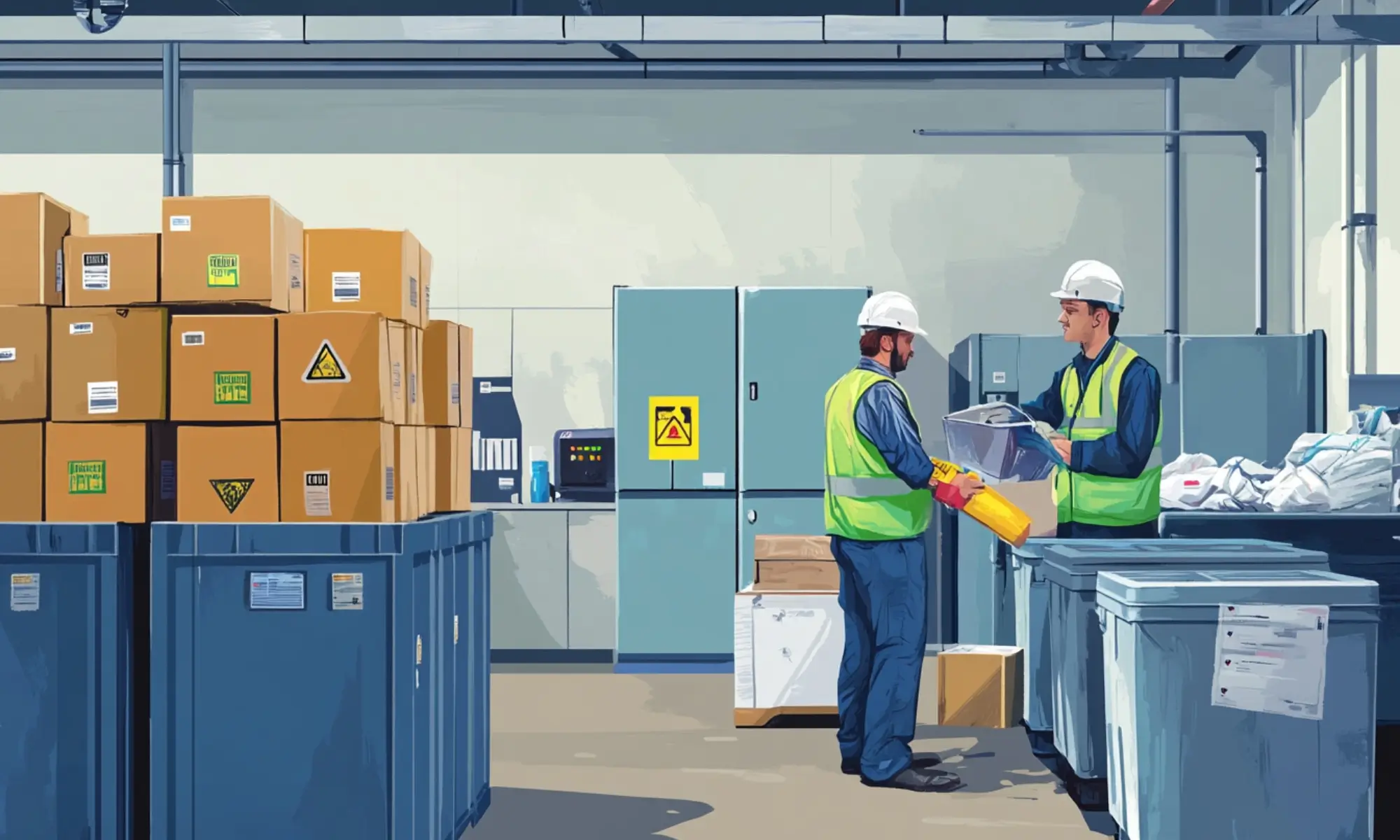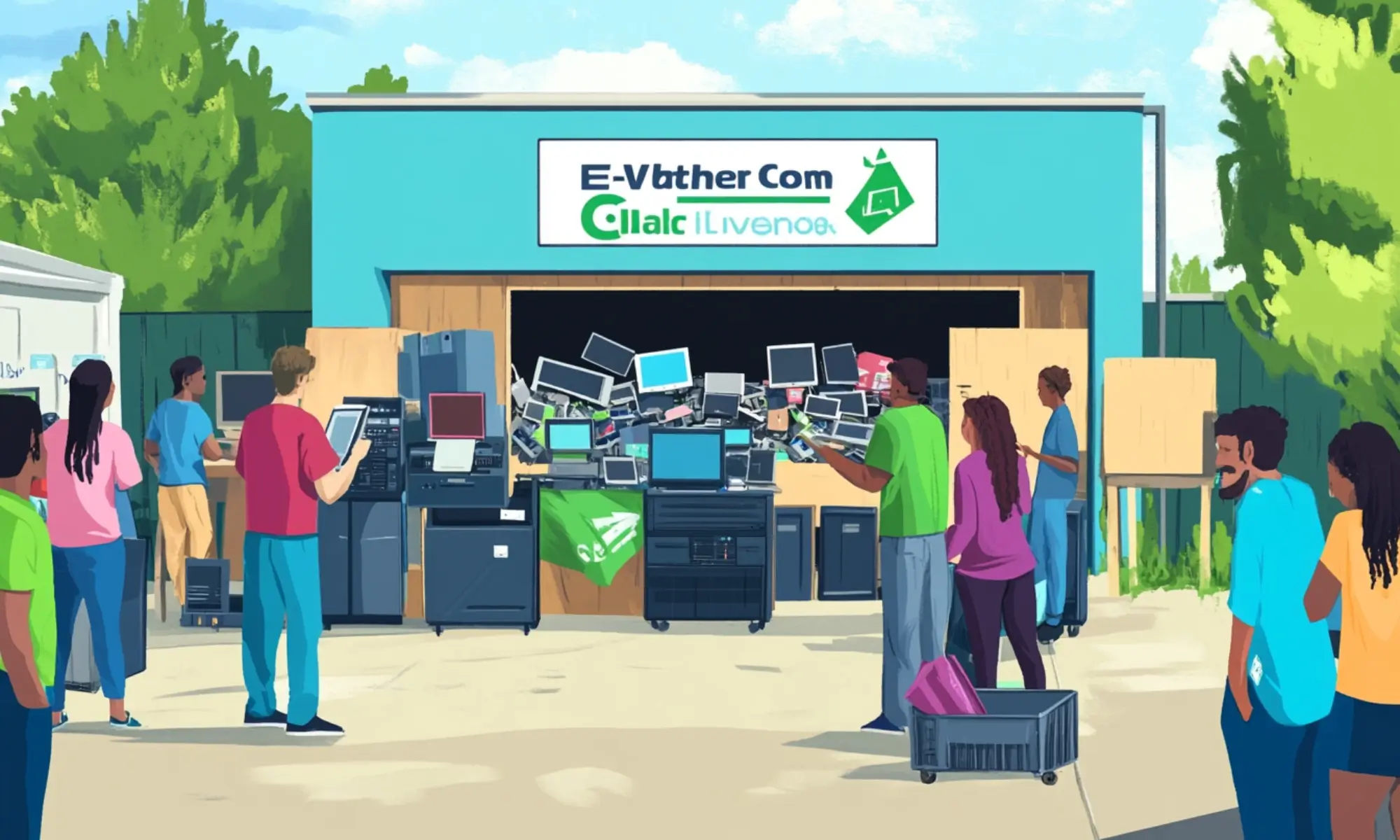In our increasingly digital world, electronic devices are ubiquitous, driving both convenience and innovation. However, this surge in electronic usage has led to a significant challenge: electronic waste, or e-waste. Understanding WEEE (Waste Electrical and Electronic Equipment) and implementing robust safety practices for e-waste handlers is crucial for environmental sustainability and personal safety.
This comprehensive guide delves into what WEEE entails and outlines essential safety protocols for those involved in e-waste management.

What’s WEEE?
WEEE stands for Waste Electrical and Electronic Equipment, a term encompassing discarded electrical and electronic devices. These include everything from smartphones and laptops to refrigerators and industrial machinery. Rapid technological advancement contributes to the growing volume of e-waste, posing environmental and health risks if not managed properly.
The Importance of Proper E-Waste Management
Proper management of WEEE is vital for several reasons:
- Environmental Protection: E-waste contains hazardous materials like lead, mercury, and cadmium, which can contaminate soil and water if disposed of incorrectly.
- Resource Recovery: Many electronic devices contain valuable materials such as gold, silver, and copper, which can be reclaimed and reused.
- Legal Compliance: Various regulations, such as the European Union’s WEEE Directive, mandate the responsible handling and disposal of e-waste.

Safety Practices for E-Waste Handlers
Handling e-waste requires adherence to specific safety protocols to mitigate risks associated with hazardous materials and ensure efficient processing. Here are key safety practices every e-waste handler should follow:
1. Personal Protective Equipment (PPE)
Wearing appropriate PPE is the first line of defense against potential hazards:
- Gloves: Protect hands from sharp components and chemical exposure.
- Safety Glasses: Prevent eye injuries from flying debris and chemical splashes.
- Respirators: Essential when handling materials that release harmful dust or fumes.
- Protective Clothing: Long sleeves and pants reduce skin exposure to contaminants.
2. Proper Training
Comprehensive training ensures that handlers are knowledgeable about the following:
- Hazard Identification: Recognizing dangerous materials and understanding their risks.
- Safe Handling Procedures: Techniques for dismantling equipment without causing accidents.
- Emergency Response: Steps to take in case of spills, exposures, or other incidents.
3. Safe Dismantling Practices
Careful dismantling minimizes the risk of injury and environmental contamination:
- Disconnection: Always disconnect devices from power sources before handling.
- Component Separation: Segregate materials like batteries, circuit boards, and plastics to prevent cross-contamination.
- Tool Usage: Use appropriate tools to avoid damaging components and ensure the safe removal of hazardous parts.

4. Hazardous Material Management
Proper handling of hazardous materials is crucial:
- Storage: Store hazardous substances in labeled, secure containers to prevent accidental exposure.
- Disposal: Follow local regulations to dispose of dangerous materials, ensuring they do not enter the general waste stream.
- Spill Containment: Implement measures to promptly contain and clean up spills to minimize environmental impact.
5. Ventilation and Air Quality Control
Maintaining good air quality in processing areas prevents respiratory issues:
- Ventilation Systems: Use exhaust fans and air filtration systems to remove harmful fumes and dust.
- Regular Maintenance: Ensure ventilation equipment is functioning correctly and blockage-free.
- Air Monitoring: Conduct regular air quality assessments to detect and address contamination levels.
6. Ergonomics and Safe Lifting
Preventing physical strain and injuries is essential for handler well-being:
- Proper Lifting Techniques: Use correct methods to lift heavy items, such as bending the knees and keeping the back straight.
- Mechanical Aids: Use tools like forklifts and conveyor belts to safely move bulky equipment.
- Workstation Design: Arrange workspaces to reduce unnecessary movement and strain on the body.
7. Fire Safety Measures
E-waste facilities are prone to fire hazards due to flammable materials and electrical components:
- Fire Extinguishers: Place appropriate extinguishers (e.g., Class C for electrical fires) in inaccessible locations.
- Fire Alarms and Sprinklers: Install and maintain fire detection and suppression systems.
- Emergency Exits: Ensure clear, unobstructed pathways for quick evacuation in case of fire.

Regulatory Compliance and Best Practices
Adhering to regulations and adopting best practices enhances safety and operational efficiency:
Compliance with WEEE Directives
Familiarize yourself with local and international WEEE regulations to ensure compliance. Key aspects include:
- Registration Requirements: Some regions require e-waste handlers to register with governmental bodies.
- Reporting Obligations: Maintain accurate records of e-waste processed and disposed of.
- Financial Responsibility: Allocate resources for proper e-waste management, covering recycling and disposal costs.
Implementing Best Practices
Beyond compliance, adopting best practices fosters a culture of safety and sustainability:
- Continuous Training: Regularly update training programs to incorporate new safety standards and technological advancements.
- Safety Audits: Conduct periodic inspections to identify and rectify potential hazards.
- Sustainability Initiatives: Promote recycling and reuse initiatives to minimize e-waste generation and environmental impact.
Conclusion
Effective WEEE management is essential for safeguarding the environment and ensuring the health and safety of e-waste handlers. By implementing robust safety practices, adhering to regulations, and fostering a culture of continuous improvement, e-waste facilities can operate efficiently and responsibly. Embracing these measures mitigates risks and contributes to the broader goal of sustainable electronic consumption and disposal.

